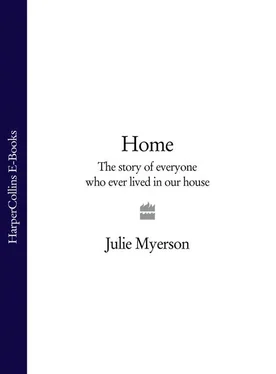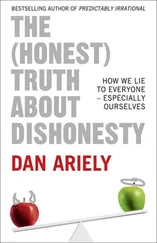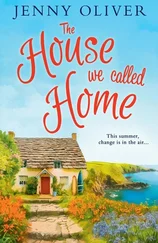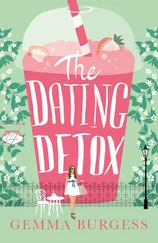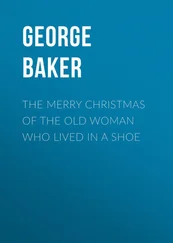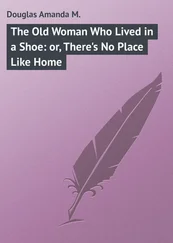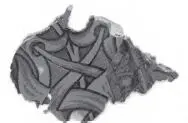
‘the layers of paper curled and rolled off’
‘What smells so horrible?’ said Jake, wrinkling his nose.
‘The glue, I think,’ Jonathan said. ‘Probably made from bones.’
‘Wicked!’ said Raphael and then, frowning, ‘But would vegetarians have used it?’
‘Weren’t really any vegetarians then.’
‘Just think,’ I said, as another William Morris-style lily showed us its black, almost funereally rimmed edges, ‘how long since anyone saw these patterns. I wonder when each one was covered up.’
‘Which one was the Haywards’ wallpaper?’ asked Chloë.
‘I imagine that’s something we’ll never know.’
But even a little information is seductive. Once you know names, you start to see things. It’s impossible not to – impossible to resist. I know almost nothing real of Henry Hayward but my imagination has already begun to whisper. And I admit it, I’ve begun to listen.
He’s tall, whiskery, gingery-haired (Hayward is definitely a gingery name). And maybe a bit of a punter, inclined to slope off to the races at Epsom or Goodwood, though he never loses too much – he has it in check. His wife Charlotte is much shorter, plumper and more self-effacing – a terrible worrier, especially about what other people say. Sometimes she thinks she only sees herself through other people’s eyes. Take away that critical, slightly warped perspective and she’s really not quite sure who she is – not that she’d ever think of expressing such a flighty idea to anyone.
Her ample figure is clad in brownish velveteen, the pile worn slightly thin around the bosom. She has a plain face, strong teeth (which she’s always been glad about), big thighs that always seem even bigger when she catches sight of them in the glass in the wardrobe door. She’s not well educated, doesn’t read much, and is always intellectually in thrall to her (she supposes) much cleverer and more artistically tuned husband. She tells herself this doesn’t matter, that she wouldn’t have it any other way, but some days it depresses her. Some days she can’t see a way forward, not even through this marriage. She calls these days her Glooms, though even to give them a name is overstating it, allowing herself a luxury she can only perceive as uselessly self-indulgent. She’s a happily married woman, for goodness’ sake. She worships at St John the Evangelist on Clapham Road. She believes in being content with your lot, especially if you can’t change it. She was quietly overjoyed when they managed to afford to rent this new, red-brick Clapham house in such a swiftly expanding neighbourhood.
Here she is now, carefully locking our front door with a hefty black key and stowing it in her skirts. Then moving solidly down our brown and cream tiled front path. Brushing past the very young laurel (now grown to a dreary spotted monster that blunts my secateurs every year). That’s her shadowy, tentative presence over there – hesitating in the space now occupied by our wheelie bin and green Lambeth recycling boxes.
The totter’s coming. She thinks she’ll let him have the old broken fireguard from the small room upstairs that they don’t need any more now that Frank’s left home. She pulls out her key and turns back, wondering whether to leave it till another day when Henry can lift it. But then Henry may stop her giving it away and she’s nigh on sick of all the bits and pieces they seem to store.
She waits, undecided – frozen on our path in a moment on a May morning in 1892. I have a photo of Jake aged two on that exact same piece of ground – blond and dimpled and dungareed – it now too seems to come from another time. Where did that small child go?
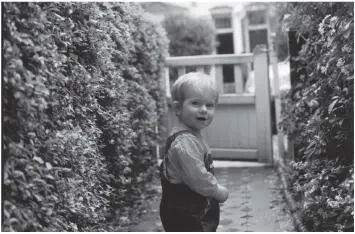
‘blonde and dimpled and dungareed’
But these are just a writer’s irresistible imaginings, not facts. What do I know? The totter may not have come that morning at all, and anyway the fireguard may still have been in use. And it might all have been quite the other way round. Charlotte might have been a quite different woman – shrill, sharp-tongued, wealthier by birth than her husband who, she never ceases to remind him, may be an author but is hardly a successful one. He’s yet to earn more than a few shillings from it. It’s pathetic, at his age – all very well to dub himself ‘author and journalist’ when the census man calls round, but when’s he going to get more than the odd article published in the South London Press ? If it wasn’t for the money left her by her mother, they’d still be living out in the falling-down cottage in Deptford and would never have afforded somewhere so swanky and clean and new.
This summer, we’ve lived at 34 Lillieshall Road for exactly fifteen years. It’s a narrow, three-storey, slightly subsiding, dirty red-brick, mid-Victorian Clapham terrace with a mature, spreading hydrangea in front of the bay window and a glossy scented jasmine that climbs up past the front door to the first-floor window.
The bedroom windowsills each sport a wooden window box, made by Jonathan and painted hyacinth blue by me and filled with whatever flower I can keep alive each season. The paintwork around the windows is white and peeling. The bricks need cleaning but it would cost a fortune so, like everything else, we put it off. There used to be a lawn in front but now there are seaside pebbles, bought by the bagful from a place behind Clapham North tube station. It’s a stylish, romantic look but would be much better if we’d killed the weeds first. As it is, the dock and groundsel and nettles spring hopefully up between the pebbles. Shingle beach meets urban waste ground.
I am perfectly, unquestioningly, at home in this house. After a childhood spent moving house almost every year, I had told myself roots didn’t matter, that being with the people you loved was all there was. I think I even believed it. I used to brag about my lack of domestic continuity, my aloof and nomadic style. Until I met Jonathan. He lived in a terraced cottage with two cats, a full fridge, and honeysuckle round the door. He was only six months older than me yet somehow had managed to achieve this state of grown-upness, of stability and domestic warmth. I fell in love with the life as much as the man.
We decided to have a baby. And a joint mortgage.
Big things and small things have happened to me in this house. I became a mother here – once, twice, three times – and, later, a writer. Standing holding the phone in the far corner of the bedroom, I listened to my mother tell me that my father had sealed himself in his garage and killed himself. I was leaning against a wall that no longer exists because we made a door through into the bathroom. Downstairs in the hall, I had my final terrible argument with my younger sister and watched her walk away down the front garden path. I sat and trembled afterwards on the bottom step of the stairs.
Upstairs, at the top of the house, I wrote a novel in the spare bedroom. I wrote another two in the tiny room on the first-floor landing. I walked fretful babies up and down the bathroom in the dead of night and, pregnant and exhausted, I once lay down on the kitchen floor in front of two baffled toddlers and wept. A squirrel terrified us when it became trapped in the chimney in Jonathan’s study. It scratched and snuffled and panicked all day. A funny and beautiful friend ate pasta at our kitchen table and told me straight out that she was dying. I watched a terrified man jump from the top floor of the refugee centre opposite when it was on fire one scary summer night. Another time, another summer, a burglar came into our bedroom as we slept and rummaged through my handbag.
Читать дальше
